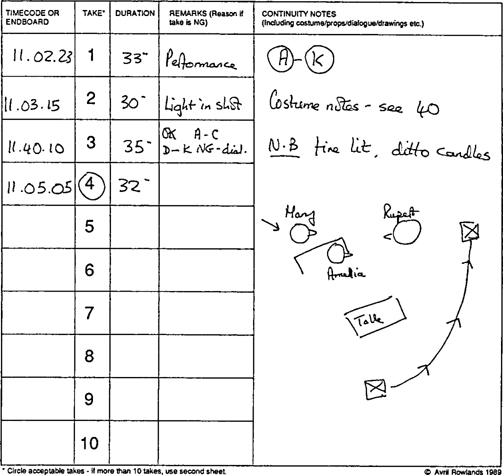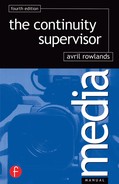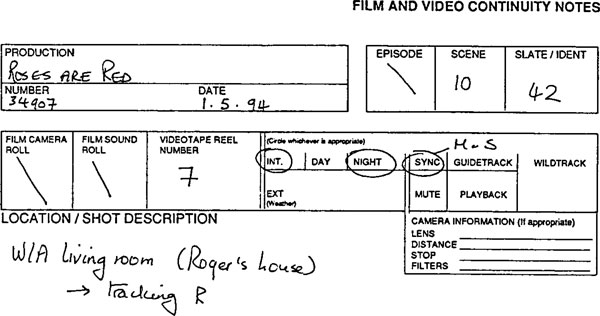Continuity Report Sheet: Details of Shooting
The information on the left-hand side of the sheet relates to the shooting and is of vital importance to the editor.
E/B or T/Code
An endboard (also marked as BOE – board on end) usually relates to shooting on film and refers to the clapperboard. Sometimes the board is not put on the front of the shot but at the end – for example, when something should be filmed instantly and without the delay of putting a board in front of the camera. The board is held upside down to indicate to the editor that it refers to the shot that has just ended.
A timecode reference should be used against each take when shooting either on videotape or on film when timecode is used on location without a clapperboard. Either the ‘in’ timecode of this take or the ‘out’ point of the preceding one should be shown.
Takes
On your continuity sheets you should circle the accepted takes. The others are marked NG (no good). But you should always give a reason why a take is NG. This is most important for the editor. Give as full a reason as possible. The take might have been good until the end, when the noise of a car intruded. Write that down. The director might have been dissatisfied with an actor’s performance or the camera operator with his framing. Write down the cause, whatever it is.
False Starts
The director calls ‘action’ to start the shot but after a few seconds the actor might fluff his lines. Instead of ‘cutting’ the camera and starting again with a new take number the director might tell the actor to start again while the camera is still running. Make a note of that false start.
Duration
Give a timing for each take, from the moment the director says ‘action’ to when he says ‘cut’.


